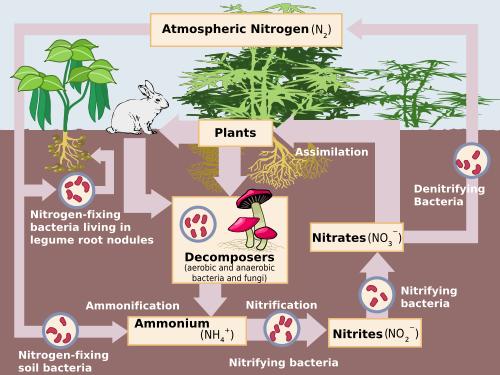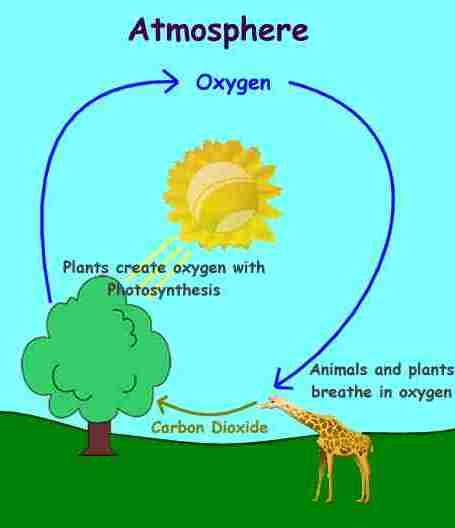Chapter Natural Resources
NATURAL RESOURCES
Rain
Rain
is formed by evaporation and condensation of water through water cycle
in.
Acid Rain
Acid
rain is caused by the release of the gases like SO2 (sulphur
dioxide) and NO2(nitrogen dioxide) released from the emission of
vehicles and combustion of fuels. These gases dissolve in rain water to form
nitric acid and sulphuric acid.
Water
Water
is renewable resource.
It is essential for all physiological activities of plants and animals.
It is essential for all physiological activities of plants and animals.
Water
is mainly present in two forms:
(i)
Surface water
(ii)
Ground water.
Water Pollution
An
undesirable change in the physical, biological or chemical properties of water
(due to addition for foreign organic, inorganic substances) that adversely
affects the aquatic life, and makes water less fit or unfit for use, is called
water pollution.
The
main causes of water pollution are as follows:
(i)
Addition of harmful substances like fertilisers and pesticides to water
(ii) Removal of desirable substances like oxygen from water
(iii) Change in water temperature
(ii) Removal of desirable substances like oxygen from water
(iii) Change in water temperature
Soil
It
is the uppermost layer of Earth’s crust, which supports terrestrial plants,
animals and microorganisms.
It
is formed from the weathering of rocks by physical, chemical and
biological activities by the action of wind, water and sun.
It
is made up mainly of mineral particles, organic materials, air, water and
living organisms
Humus : The decayed living organisms present in soil is called humus.
Humus
makes the soil porous and allows water and air to penetrate deep underground
making the soil more fertile.
Soil pollution :
Removal
of useful components from the soil and addition of other substances, which
adversely affect the fertility of the soil and kill micro-organisms living in
it is called soil pollution.
Fertilizers
and pesticides destroy the soil structure.
Mosses
or Bryophytes are indicator of soil pollution.
Soil Erosion
Removal
of topmost layer of soil by wind, water or other activities is called soil
erosion.
Causes
of soil erosion
Main
factors responsible for the soil erosion are:
Over
grazing of land.
Removal
of top soil by wind (storms) and water (floods).
Deforestation
Leaving
land uncultivated for long time.
Effects of Soil Erosion:
Loss
of fertility due to loss of topmost fertile soil which results in
desertification.
Landslides
in hilly areas.
Clogging
of water drains and water reservoirs by the washed off soil.
Prevention of Soil Erosion:
Soil
can be prevented from getting eroded by implementing the following methods:
Intensive
cropping.
Terrace
farming.
Aforestation
Making
strong embankments along the river banks.
Chipko Movement
It
was a movement started to conserve forests.
The
movement was led by Shri. Sunder Lal Bahuguna in Garhwal Himalayas.
Biogeochemical cycles
A
constant interaction between biotic and abiotic components of the biosphere
makes a system and these flow of components form a cycle called biogeochemical
cycle.
Some
prominent cycles in nature are described below:
1. Water cycle
The
whole process in which water evaporates and falls on the land as rain and later
flows back into the sea via rivers is known as the water-cycle.
Main
steps involved in water cycles are:
a. Evaporation: Water on earth changes to
vapour due to sun’s heat and rises above.
b. Transpiration: Plants absorb water
through the roots and then give off excess water in the form of vapor through
pores in their leaves.
c. Respiration: It is a process in living
organisms involving the production of energy, with the intake of oxygen and the
release of carbon dioxide along with water vapour.
d. Precipitation: It is the process of
condensation of water vapour in atmosphere into liduid which fall down in the
form of rain, snow, sleet or hail.
e. Percolation and
Absorption:
Some of the precipitation soaks into the ground to reach the underground water,
some on leand gets absorbed by the plants, crops and trees to grow and the rest
downhill as runoff to reach the seas to complete the whole water cycle.
2. Nitrogen cycle

The
sequence in which nitrogen passes from the atmosphere to the soil and
organisms, and then is eventually released back into the atmosphere, is called
nitrogen cycle.
Nitrogen
cycle involves following processes:
a. Nitrogen Fixation
It
is a processes by which atmospheric nitrogen is converted into the form which
can be easily absorbed the organisms on earth.
Nitrogen
Fixation is carried out by following ways:
By
lightning: When lightning occurs, the high temperature and pressure convert
nitrogen and water into nitrates and nitrites which get dissolved in water and
are readily used by aquatic plants and animals.
By
bacteria- Molecular nitrogen is converted into nitrates and nitrites by free
living bacteria or the bacteria like Rhizobium present in the root nodules of
legumes. Some bacteria convert the nitrogen gas (N2) to ammonia (NH3)
which plants can use.
b. Nitrification: It is the process by
which ammonia is converted into nitrites and nitrates.
c. Ammonification: It is the process by
which soil bacteria decompose dead organic matter and release ammonia into
soil.
d. Denitrification: It is the process by
which nitrates are converted into atmospheric nitrogen back to complete the
cycle.
3. Carbon cycle


The
carbon cycle is the process by which carbon moves from the atmosphere into the
Earth and its organisms and then back again.
Carbon
cycle involves the following processes:
Photosynthesis : In this process plants
form their food by absorbing the atmospheric carbon in the form of
carbondioxide gas and release oxygen gas.
Respiration: In this process
plants and animals respire resulting in breakdown of glucose stored in the
plants and animals to release CO2, water and energy.
Decomposition: In this process dead
plants and animals get decomposed to release carbon into the environment.
Combustion: Burning of fossil fuels
releases carbon dioxide gas into the environment as by product.
Movement of carbon from the
atmosphere to the oceans: The oceans, and other water bodies, soak up about a quarter of the
carbon dioxide to form carbonates.
Thus,
the amount of carbon –dioxide, so formed, is almost equal to the amount of
carbon dioxide consumed & hence, its concentration in air remains same.
4. Oxygen cycle


The
cyclic process by which oxygen element is circulated continuously through the
living and non-living components of the biosphere constitutes oxygen
cycle.
Oxygen
cycle involves the following processes:
a.
Respiration: All living organisms take in simple sugars (glucose) and oxygen
and release carbon dioxide, water and energy.
b.
Combustion: During the processes of combustion (or burning), oxygen reacts with
carbon to form carbon dioxide gas.
c.
Photosybthesis: Carbondioxide gas from atmosphere is absorbed by green plants
in the presence of sunlight to form carbohydrates and oxygen. Thus, oxygen is
liberated in atmosphere.
Green House Effect
Greenhouse
gases such as carbon dioxide, methane, nitrogen oxide and Chlorofuorocarbans
present in atmosphere prevents the escape of heat falling on Earth’s surface
rather than absorbing it. This keeps the Earth warm and the phenomenon is known
greenhouse effect.
Ozone layer :
Three
molecules of oxygen combine to form ozone which forms a layer in stratosphere.
It
acts as a protective shield as it prevents harmful ultraviolet radiations to
reach the earth.
Compounds
like CFCs (Chloro fluorocarbons) reacts with ozone releasing molecular oxygen
resulting in breakdown of ozone, which is termed as ozone depletion.
i have taken the printout of these notes - DAKSH VERMA, IX-F...THANK YOU MAM
ReplyDeleteI have done it
ReplyDeletethankyou mam
ReplyDeletei have taken the notes
ReplyDeleteSanskar Sharma
IX-F
Thank U maàm
ReplyDeleteThank you ma'am
ReplyDeletegood beta keep doing the hard work
ReplyDeleteI have taken it
ReplyDeleteThank u mam
Work hard for preboard
ReplyDelete👍
ReplyDeleteI have taken the notes. Tanya sharma 9-f.
ReplyDeleteMam I have taken printout of these notes
ReplyDeleteKashvi kalra
IX F
Mam I have taken out the print out and it's amazing easy to remember and understand Aryan pahwa 9-c
ReplyDeleteVery nice notes ma'am thankyou very much for this
ReplyDeleteJahnvi Gupta 9-G
I have got the notes
ReplyDeletePriyanshu arora 9-f
I have taken the notes.my self rakshit garg of 9-F
ReplyDeleteVery useful notes
ReplyDeleteI hv pasted them
Thank you mam...����
I have taken it
ReplyDeleteThank u mam
👍
ReplyDeleteMam I have taken the notes
ReplyDeleteNaman
Fabulous...bhut bdiya♥
ReplyDelete